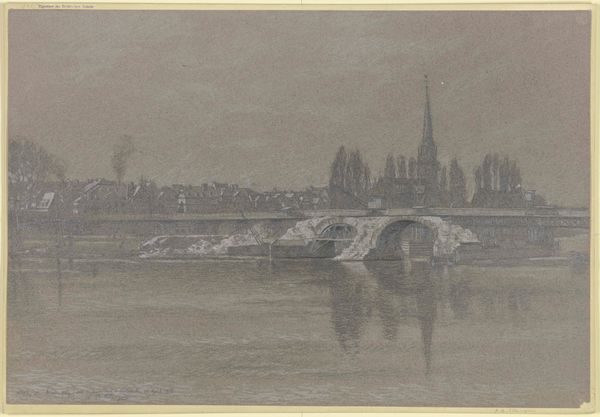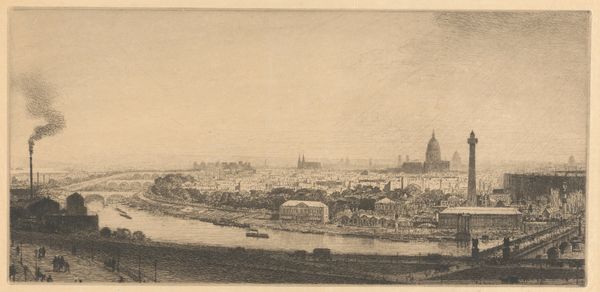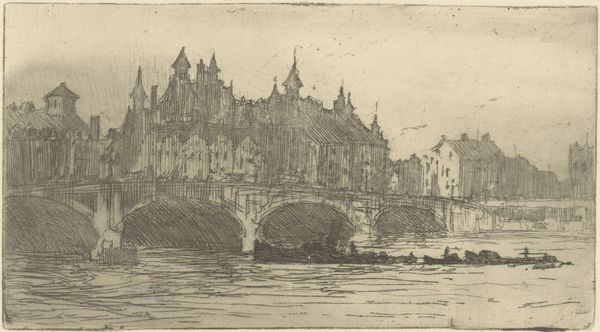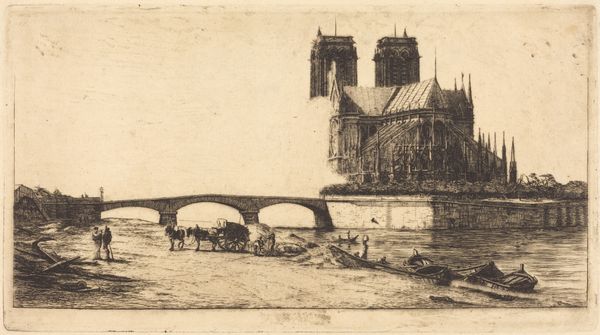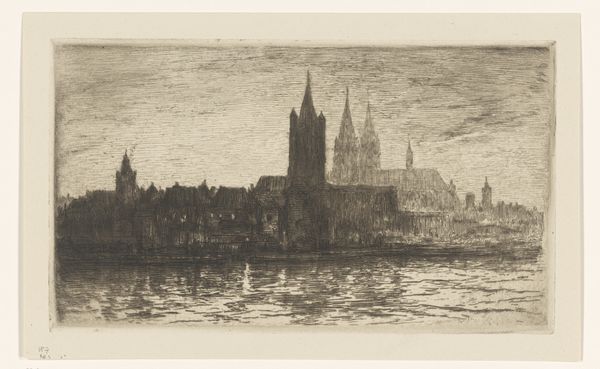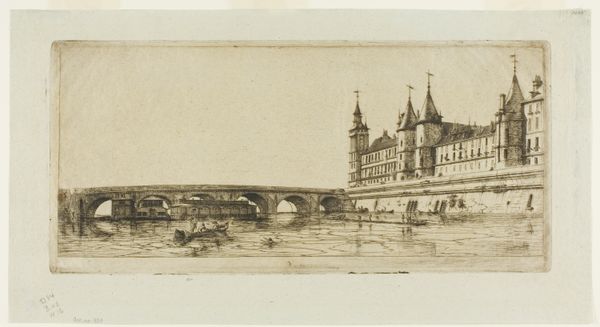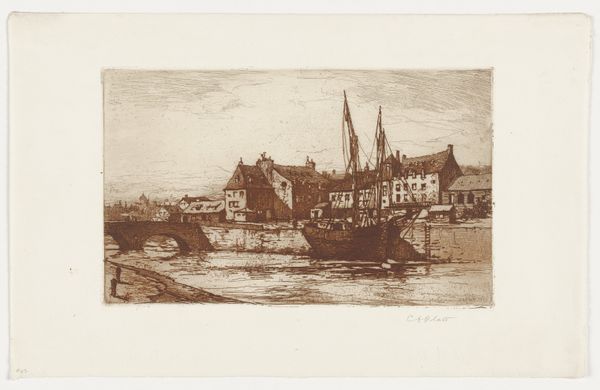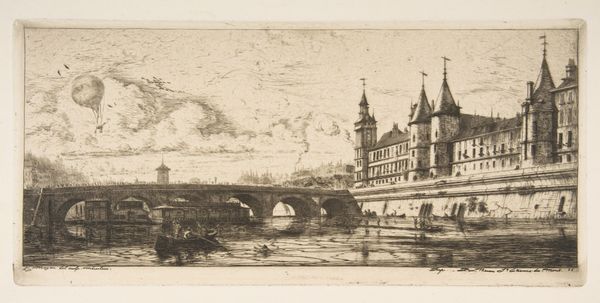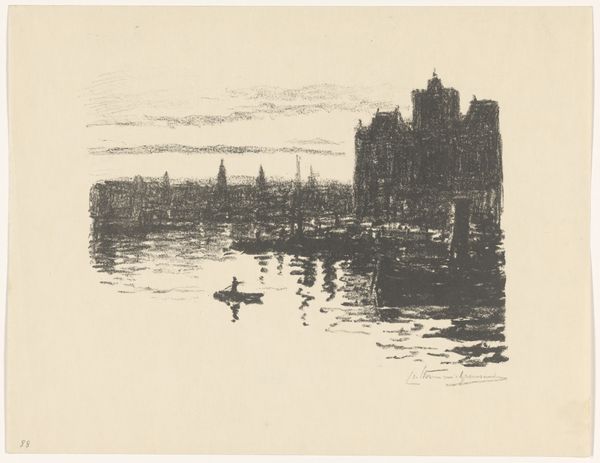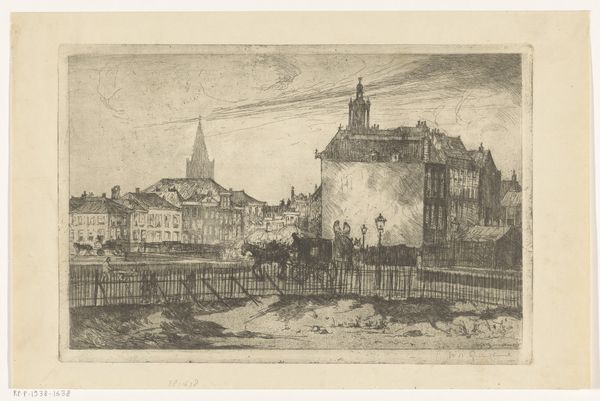
drawing, pencil
#
drawing
#
impressionism
#
pencil sketch
#
landscape
#
etching
#
pencil
#
cityscape
Dimensions: height 126 mm, width 235 mm
Copyright: Rijks Museum: Open Domain
Curator: Right then, let's look at this lovely sketch. It’s titled "Gezicht op Frankfurt am Main," or "View of Frankfurt am Main," made sometime between 1851 and 1902 by Carel Nicolaas Storm van 's-Gravesande. It's a pencil drawing with a cityscape theme, held here at the Rijksmuseum. What's your first take? Editor: My first impression? Quiet industry. I notice that prominent log raft in the foreground against the skeletal skyline. There's something really evocative about the combination of burgeoning industrial activity and architectural permanence, particularly with that looming church spire. It makes me think about the soul of a place evolving… and, perhaps, resisting change. Curator: Resisting! Interesting choice of word. It feels quite gentle to me. A soft rendering of urban life, almost nostalgic, looking at it I don’t feel that there’s conflict at all, quite the opposite actually, I would have expected the contrast you've described. What do you make of van 's-Gravesande's technique, then? I'm drawn to the loose, impressionistic style – quite unlike some of his other, more formal work. Editor: Exactly! I find the starkness of the medium amplifies that quiet tension I felt initially. The city is reduced to its barest elements: structures and water, life and industry. Looking closer, the almost hazy quality of the lines and shading hints at the societal shifts that accompanied the late Industrial Revolution in cities like Frankfurt: shifts of power, class divisions and, naturally, wealth accumulation. It raises some pressing issues for the citizens and beyond! Curator: You always take me somewhere political! For me, I see a personal reflection. There's something intimate about sketches, right? They feel like glimpses into the artist's own process, as though it's a private viewing, not so "pressing". The viewpoint here seems deliberate, the way he positions us, the viewer, almost on the water’s edge makes you sense being right there and experiencing something he may have. I'm wondering, what did you make of his life choices and political leanings when it came to interpreting this type of artwork? Editor: The piece offers such a potent reminder of the historical forces shaping even seemingly tranquil scenes! Thank you for bringing your particular sensibilities to this, allowing us to feel the pulse, so to speak! Curator: Always! And on that note, I’m keen to take a shot at our next artwork, thanks.
Comments
No comments
Be the first to comment and join the conversation on the ultimate creative platform.
